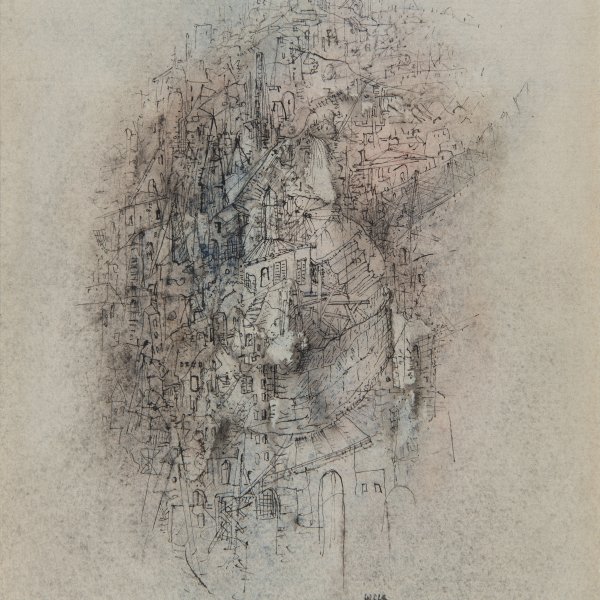Wols
The German painter Wolfgang Schulze, known as Wols, has gone down in art history as one of the forerunners of Art Informel and one of the leading exponents of Tachisme.
The son of the chancellor of Saxony in Dresden, as a child Wols was a gifted musician and violinist. In 1930 he developed an interest in photography, which he combined with drawing and painting after moving to Berlin in 1932. There he intended to enrol at the Bauhaus, but László Moholy-Nagy recommended he go to Paris, where he met Amédée Ozenfant, Fernand Léger, Hans Arp and César Domela. He also came into contact with Max Ernst, Joan Miró and other members of the Surrealist movement, whose influence is apparent in his drawings and photographs from this period. In 1937, the year he adopted the pseudonym Wols, he was appointed official photographer of the Pavillon de l’Elégance at the Paris international exhibition.
Like other Germans, when the Second World War broke out Wols was interned in a concentration camp and was later forced to flee from the advance of the German troops. He finally found refuge in Montélimar, where he remained until the war was over, drawing and painting watercolours that were first exhibited in 1945 at the Galerie Drouin in Paris. Compared to the scant repercussion of his first exhibition, the show staged at the same gallery in 1947 marked the start of his recognition as a painter. Around this time Wols met Jean Paul Sartre and existentialism left an imprint on his works.
Towards 1946 Wols began to work with oils, encouraged by his dealer René Drouin. His gestural style greatly influenced artists like Georges Mathieu, and critics such as Michel Tapié coined the term “Art autre” (Other Art) to describe this post-war art form.





